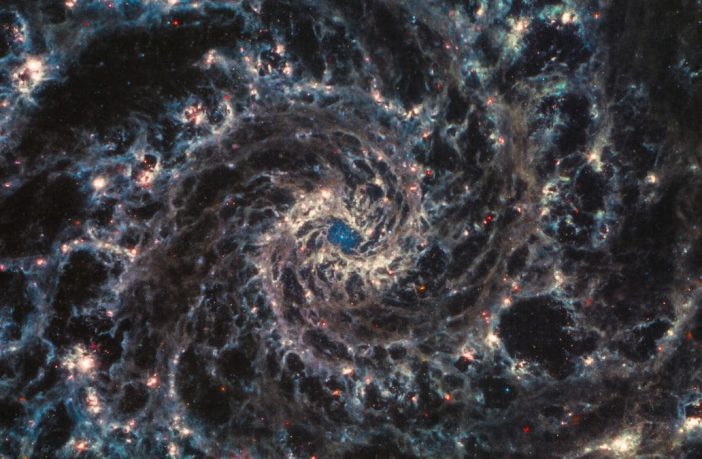
After capturing the deepest, sharpest infrared image of the distant universe, NASA’s James Webb Space Telescope (JWST) has inspired captivating photos, formed using its data. A citizen scientist named Judy Schmidt processed the raw data obtained by JWST and turned it into some of the most breathtaking images of two spiral galaxies. The galaxies, NGC 628 and NGC 7496, are both located near the Milky Way galaxy and are studied as part of High Angular Resolution Physics in Nearby Galaxies (PHANGS).
The spiral galaxy NGC 628 or the phantom galaxy, imaged by Judy Schmidt, is located just 32 million light-years away and offers a good amount of detail to study. It is considered a galaxy of grand design that has prominent, clear and well-shaped arms. The galaxy is becoming significant and astronomers have found at least three supernovae in NGC 628.
NGC 7496, on the other hand, is known as a barred galaxy with its spiral arms extending from a distinct bar that tends to cut through the center of the galaxy. The formation would be due to the uneven density in the galactic disk. The high density region pulls the star towards it and this results in bars. NGC 7496 is at a distance of 24 million light years.
The gas in these bars is channeled inward, making it a region rich in star formation. With its good visibility, NGC 7496 offers scientists a great laboratory to study star formation.
Let’s just see what JWST observed yesterday…
Oh, good God. pic.twitter.com/8UQWi2zPlR— gbrammer (@gbrammer) July 18, 2022
NASA’s James Webb Space Telescope and the Hubble Space Telescope both operate in different lighting and thus produce different images. While the Hubble Telescope is an optical and ultraviolet instrument, the JWST operates in infrared light and has the ability to detect light behind gas and dust in the optical wavelength. The observations of the two telescopes therefore prove to be complementary where Hubble captures the dust while JWST scrutinizes it to watch the nascent stars.
Tech



